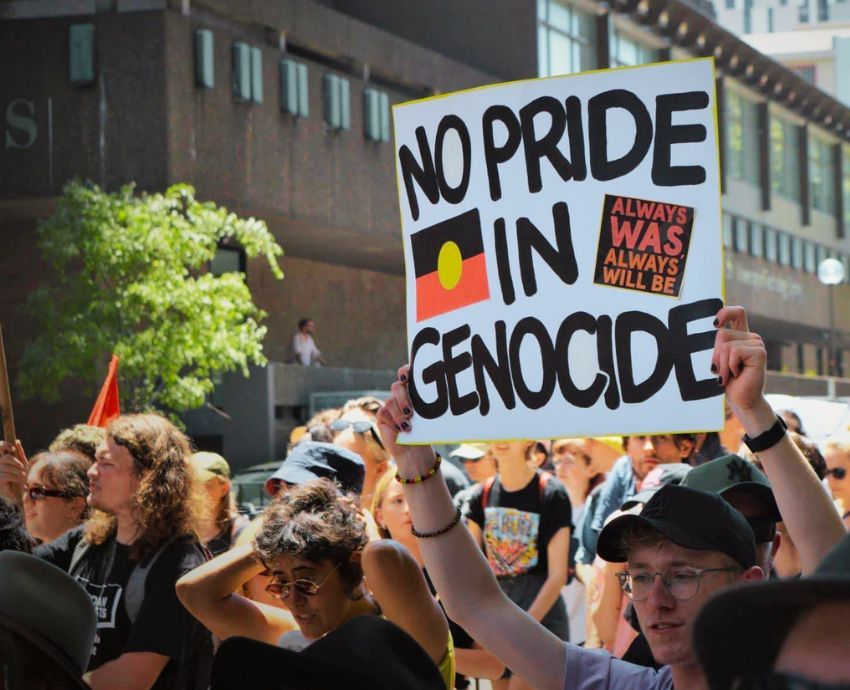
One of the concerns of First Nations activists in the progressive No camp is that the Voice will not be truly representative. They have reason for concern.
First Nations activists, including Djab Wurrung Gunnai Gunditjmara Senator Lidia Thorpe, have described the Voice as “appointed” or “self-selected” by its chief architects, including Marcia Langton and Noel Pearson.
The official Yes case is silent on how the Voice will be selected. It only says that the Voice will have “representatives from all states and territories, the Torres Strait Islands and remote communities” and will “include young people and a balance of men and women”.
The Anthony Albanese Labor government says the legislation, yet to be presented to parliament, will contain the details about the Voice’s composition.
The July 2021 final report of the Indigenous Co-Design Committee, headed by Tom Calma and Langton, expressly recommends that the National Voice not be directly elected by First Nations people. They want it to instead be appointed by 35 regional Voice assemblies (themselves also not directly elected) and partly appointed in liaison with governments.
Under the system proposed by the Calma-Langton report, it is hard to imagine how First Nations people who are not bureaucratically entrenched at the regional level would be elected to the national Voice.
If any grassroots activists somehow get through that hurdle, an “ethics committee” is then proposed to vet those wanting to be appointed to the national Voice.
Being convicted under the draconian anti-protest laws, now in force in all states, might well be grounds for exclusion from the Voice.
Further, the Calma-Langton report recommended that the process of setting up regional Voice structures (which would encompass existing Aboriginal institutions) might take about three years before the first “interim Voice” be appointed.
This approach is very different from previous advisory bodies.
First Nations people directly elected two of the previous national advisory bodies — the National Aboriginal Consultative Committee/National Aboriginal Conference (NACC/NAC) (1973–1985) and the Aboriginal and Torres Strait Islander Commission (ATSIC) (1990–2005).
When these former advisory bodies mustered the confidence, or leadership, to challenge the government of the day, the fact that they were directly elected by First Nations people gave them political authority. Coalition and Labor governments, alike, hated this.
Emeritus Professor Tim Rowse pointed out in his review of the Calma-Langton report that it was shaped by “concessions to conservative opinion”.
“The Final Report addresses conservative caution in several ways: explicitly denying the National Voice an ‘inquisitorial’ role; refusing to propose a model of funding that would insulate the Voice from the annual budget; plotting a slow implementation plan that requires much intergovernmental cooperation; and subjecting the 35 Local and Regional Voices to a process of government evaluation before recognition.”
Rowse said the committee had proposed steps to address the conservative fear that the Voice might have too much political authority.
“As Paul Kelly pointed out in several articles in The Australian in 2018 and 2019, the conservative fear that the National Voice to Parliament would be a ‘third chamber’ is best understood as a reasoned apprehension of the moral authority of National Voice,” Rowse noted.
“To act contrary to advice issued publicly by the National Voice could be politically costly for any government.”
To address this conservative fear, the Calma-Langton report proposed that parliament and the government would only be expected to “consult on proposed laws and policies that have a significant or distinctive impact on Aboriginal and Torres Strait Islander peoples”.
Further, Rowse said the Calma-Langton report proposed that the Voice have no right to challenge the decision of the government in a court.
“The Final Report then goes on to recommend that no court should ever be allowed to rule on whether a government was meeting these obligations and expectations. That is, the ‘consultation standards’ must be non-justiciable,” Rowse explained.
If major concessions to conservative opinion like these were necessary for the Voice to get up, what will the Voice be good for? And who will it represent?
[This is the second in a series by Peter Boyle on the Voice. The first part is here.]